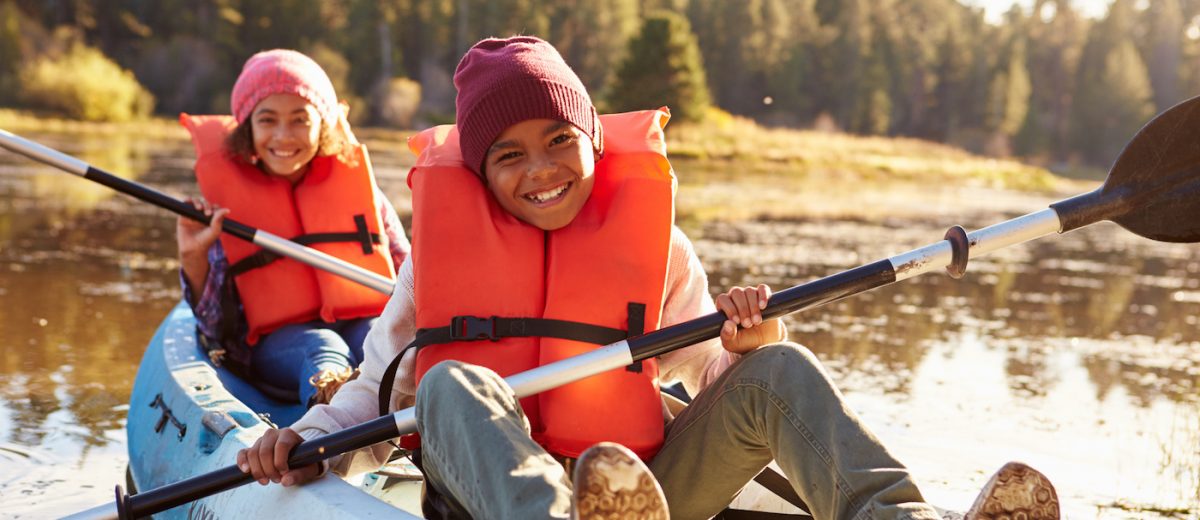|
Bright sun and a warm breeze greeted my daughter and I as we paddled our kayaks up the Penns Creek, but dangers lurked ahead. We were exploring a shoreline submerged by higher water typical for an early spring paddle, with small trees and branches jutting out of the water at a variety of angles. After a short pause in a calm pool created by a few underwater branches, we darted out toward the center of the creek to ride the current back to our property about 100 yards downstream. My daughter had no trouble pivoting around one particular branch and into the main flow.
I was not so lucky. The front of my kayak bumped the limb where it came out of the creek, yet the rear of the boat was still hugging the shore, leaving me snagged broadside to the advancing current hung parallel on the submerged limb and unable to back out and take a different route. I used my paddle to push off from the shoreline and then quickly swung it in front of me, digging deep into the murky water with the blades to propel me past the branch and into the main flow of the creek. The move combined with the swift current splashed a mini-wave of cold water into my kayak — a frigid reminder to be extra cautious of the many potential natural hazards one can find when paddling in the early spring. This can be an exciting time to explore our area waterways in a kayak. Sections of creek that can be too shallow to paddle in the late summer and early fall can be much more robust in the early spring. Water tables are higher, the current can move much more swiftly and we are all looking for ways to shake off the cabin fever of winter and, this year, restrictions surrounding coronavirus. While planning your adventure, be sure to consider the following safety tips surrounding a few of the dangers associated with early spring paddling, including a few pointers from a friend, John Zangari-Ryan, who has been mapping long stretches of the Susquehanna River’s West Branch via kayak. 1. Always wear a certified life jacket. The fish and boat commission requires that everyone, regardless of age or swimming ability, wears a life jacket on boats less than 16 feet in length or any canoe or kayak during the cold weather months running from Nov. 1 through April 30. However, it is suggested that it become habit that life jackets be worn year-round while kayaking. According to the fish and boat commission, 80 percent of all recreational boating fatalities happen to people who are not wearing a life jacket. 2. Cold-water shock happens when someone is suddenly immersed in cold water. It doesn’t have to be freezing — it often happens in water temperatures above 50 degrees. When water is especially cold, wear a dry suit. Also, certain clothing still insulates when it is wet, such as wool, fleece or other synthetics. 3. Keep away from possible hazards along the edges of creeks — especially when the current is moving more swiftly and a higher water table creates additional hazards, such as submerged branches or debris. 4. Wear proper footwear. Invest in a good pair of water shoes that protect the foot and toes. Rocks, broken glass and other debris can be found in the bottom of many creeks and the river. 5. Never boat alone — always use the buddy system. 6. Bring an emergency blanket and a change of clothes in a dry bag. 7. Wear dry gear if possible, at least dry socks gloves and bottoms. 8. Stay by the shoreline. 9. Make sure someone knows where you are going. 10. Purchase a tracking device for yourself and also be sure to bring a cell phone in a waterproof bag.
1 Comment
Leave a Reply. |
AuthorsRiverkeeper John Zaktansky is an award-winning journalist and avid promoter of the outdoors who loves camping, kayaking, fishing and hunting with the family. Archives
July 2024
Topics |

 RSS Feed
RSS Feed